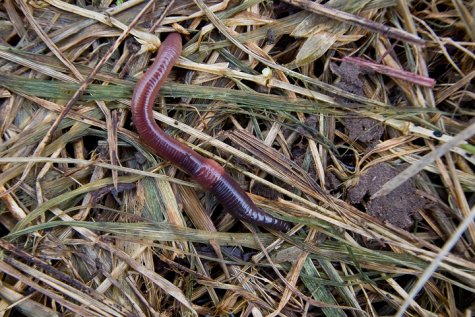Earthworm time
Photo: Mats Kangur
Translation: Liis
| Grey worm | Harilik mullauss | Aporrectodea caliginosa |
In addition to our most common earthworm, the grey worm, there are 12 more species of earthworms in Estonia, all belonging to the Oligochaeta (meaning “with few hairs”) class. The hairs or bristles help the earthworm to move and to hold on to its tunnels. On each segment of the body there are four pairs of bristles; who has tried to pull an earthworm out of the earth knows that sometimes this ends with the worm being torn in two. It isn’t too bad, the head part eventually manages to regenerate a tail end. Eventually: earthworms can grow quite old, their life span may be from four to ten years.
Now, in a dangerous season for them, we can see earthworms that have come to the soil surface, escaping from the flood waters to breathe in oxygen. The water drenched surroundings have become too airless. Breathing can be done with the whole body surface. But so they are easy preys for the newly arrived migrant birds, lizards, hedgehogs and snakes. Underground they have only one enemy – moles.
Moving in the darkness earthworms eat soil and plant debris, and at the same time mix and loosen up the soil layers. This is an enormously useful activity because in such worked-over black soil there is more oxygen, water transport is made easier and the growth of plant roots improves.
In summer when the proper time comes we will discuss the propagation of the earthworms.









